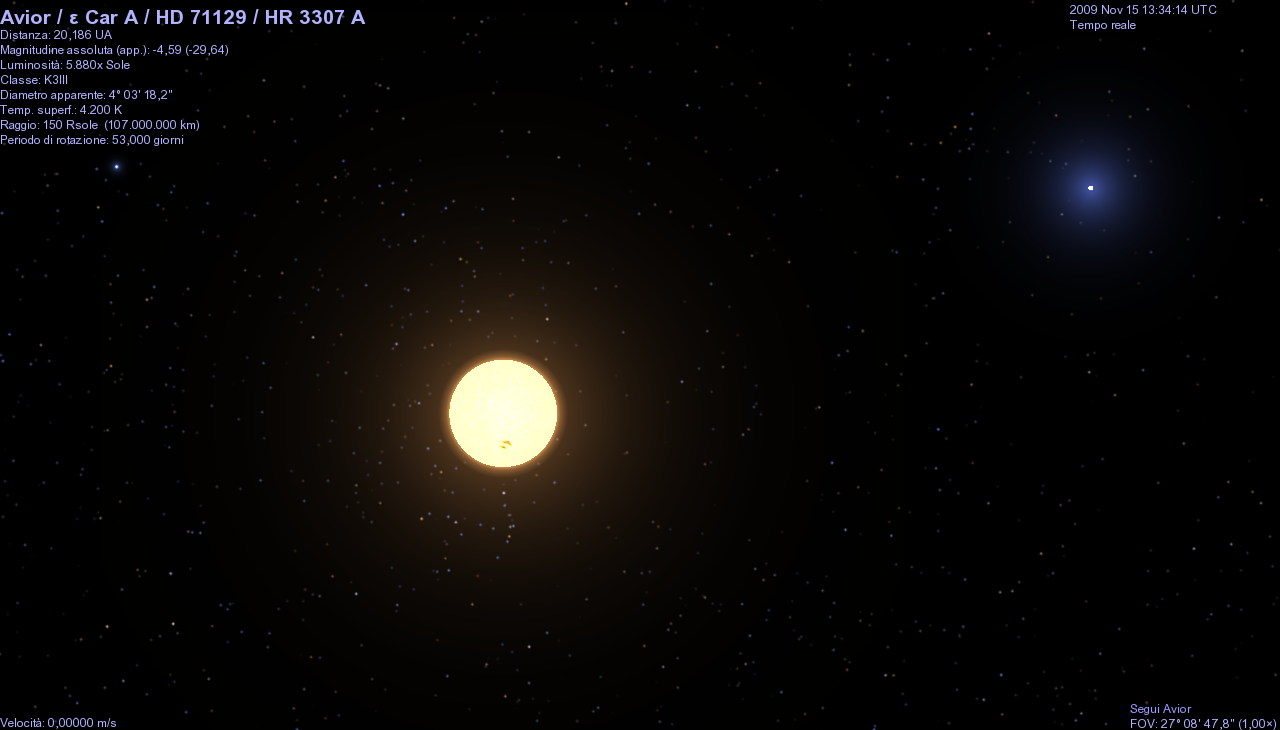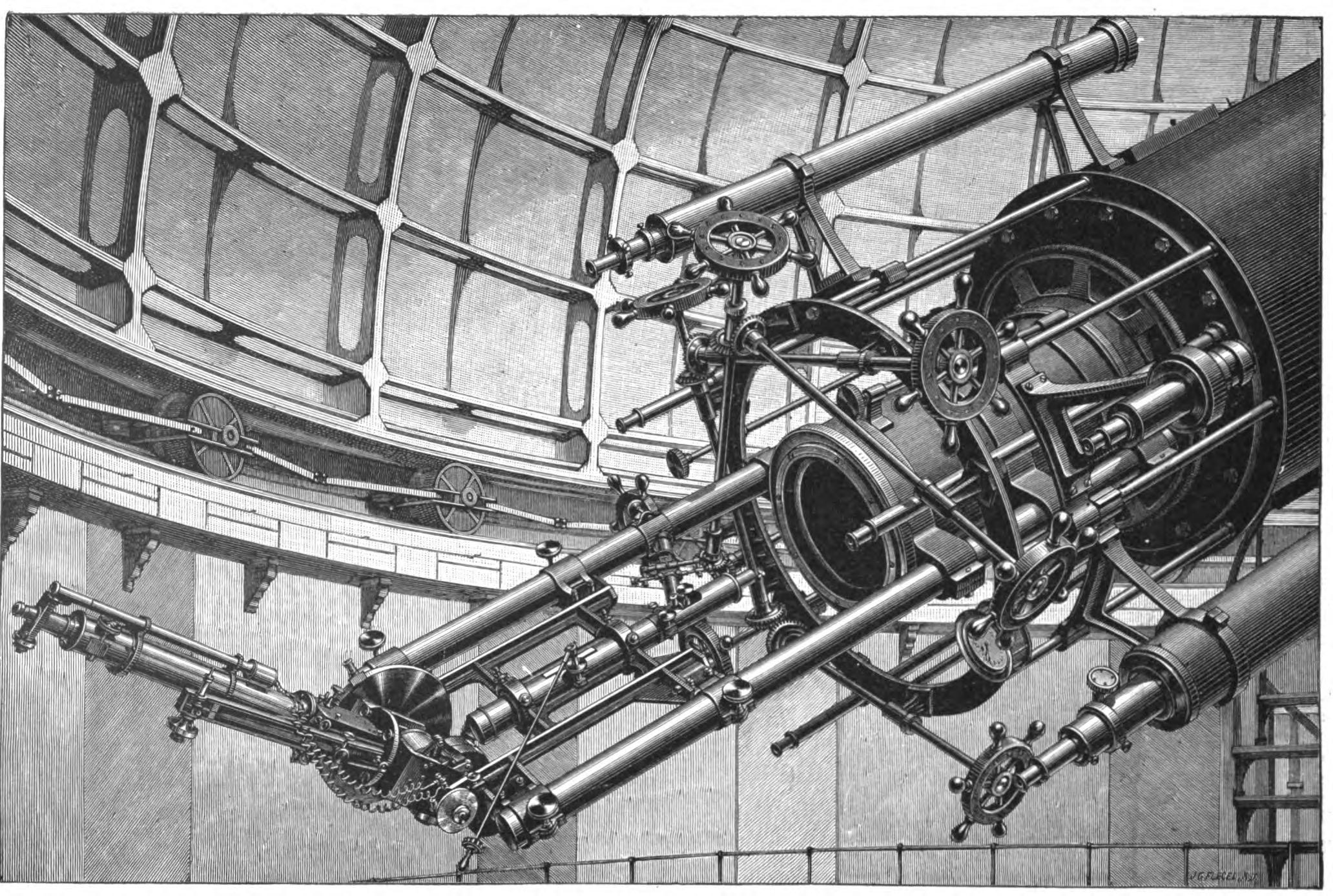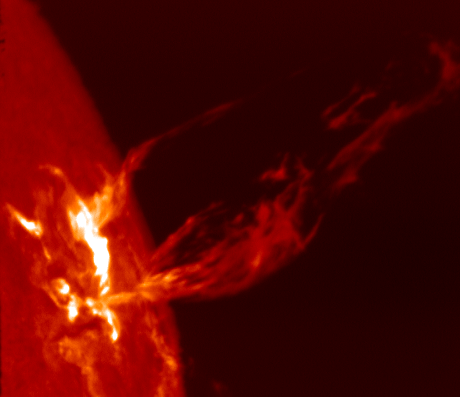|
HD 37017
HD 37017 is a binary star system in the equatorial constellation of Orion. It has the variable star designation V1046 Orionis; ''HD 37017'' is the identifier from the '' Henry Draper Catalogue''. The system is a challenge to view with the naked eye, being close to the lower limit of visibility with a combined apparent visual magnitude of 6.55. It is located at a distance of approximately 1,230 light years based on parallax, and is drifting further away with a radial velocity of +32 km/s. The system is part of star cluster NGC 1981. The binary nature of this system was suggested by A. Blaauw and T. S. van Albada in 1963. It is a double-lined spectroscopic binary with an orbital period of 18.6556 days and an eccentricity of 0.31. The eccentricity is considered unusually large for such a close system. It forms a suspected eclipsing binary that ranges in brightness from 6.54 down to 6.58. The primary is a helium-strong, magnetic chemically peculiar star wi ... [...More Info...] [...Related Items...] OR: [Wikipedia] [Google] [Baidu] |
V1046OriLightCurve
V1, V01 or V-1 can refer to version one (for anything) (e.g., see version control) V1, V01 or V-1 may also refer to: In aircraft * V-1 flying bomb, a World War II German weapon * V1 speed, the maximum speed at which an aircraft pilot may abort a takeoff without causing a runway overrun * Vultee V-1, an American single-engine airliner of the 1930s * Fokker V.1, a German parasol monoplane experimental fighter prototype, built in 1916 * The first prototype/experimental ''(Versuchs)'' airframe of nearly any German WW II-era military aircraft Vessels * V1-class destroyer, a German World War I destroyer class * USS V-1, 1924–1931 designation of the USS ''Barracuda'' (SS-163), first of the US "V-boat" series of submarines * V1, a rudderless single-paddler outrigger canoe In medicine * V1, the primary visual cortex * V1, the ophthalmic nerve, first division of the trigeminal nerve * V1, one of six precordial leads in electrocardiography In astronomy * V1, or ''Hubble variable ... [...More Info...] [...Related Items...] OR: [Wikipedia] [Google] [Baidu] |
Orbital Eccentricity
In astrodynamics, the orbital eccentricity of an astronomical object is a dimensionless parameter that determines the amount by which its orbit around another body deviates from a perfect circle. A value of 0 is a circular orbit, values between 0 and 1 form an elliptic orbit, 1 is a parabolic escape orbit (or capture orbit), and greater than 1 is a hyperbola. The term derives its name from the parameters of conic sections, as every Kepler orbit is a conic section. It is normally used for the isolated two-body problem, but extensions exist for objects following a rosette orbit through the Galaxy. Definition In a two-body problem with inverse-square-law force, every orbit is a Kepler orbit. The eccentricity of this Kepler orbit is a non-negative number that defines its shape. The eccentricity may take the following values: * circular orbit: ''e'' = 0 * elliptic orbit: 0 < ''e'' < 1 * |
Durchmusterung Objects
In astronomy, Durchmusterung or Bonner Durchmusterung (BD) is an astrometric star catalogue of the whole sky, compiled by the Bonn Observatory in Germany from 1859 to 1903. The name comes from ('run-through examination'), a German word used for a systematic survey of objects or data. The term has sometimes been used for other astronomical surveys, including not only stars, but also the search for other celestial objects. Special tasks include celestial scanning in electromagnetic wavelengths shorter or longer than visible light waves. Original catalog The 44 years of work on the Bonner Durchmusterung (abbreviated BD), initiated by Friedrich Argelander and largely carried out by his assistants, resulted in a catalogue of the positions and apparent magnitudes of approximately 325,000 stars to apparent magnitude 9–10. The catalogue was accompanied by charts plotting the positions of the stars, and was the basis for the ''Astronomische Gesellschaft Katalog'' (AGK) and '' Smith ... [...More Info...] [...Related Items...] OR: [Wikipedia] [Google] [Baidu] |
Spectroscopic Binaries
A binary star is a system of two stars that are gravitationally bound to and in orbit around each other. Binary stars in the night sky that are seen as a single object to the naked eye are often resolved using a telescope as separate stars, in which case they are called ''visual binaries''. Many visual binaries have long orbital periods of several centuries or millennia and therefore have orbits which are uncertain or poorly known. They may also be detected by indirect techniques, such as spectroscopy (''spectroscopic binaries'') or astrometry (''astrometric binaries''). If a binary star happens to orbit in a plane along our line of sight, its components will eclipse and transit each other; these pairs are called ''eclipsing binaries'', or, together with other binaries that change brightness as they orbit, ''photometric binaries''. If components in binary star systems are close enough they can gravitationally distort their mutual outer stellar atmospheres. In some cases, the ... [...More Info...] [...Related Items...] OR: [Wikipedia] [Google] [Baidu] |
SX Arietis Variables
SX Arietis variables are a class of variable stars. They are generally B-type main sequence stars of spectral types B0p to B9p— high-temperature analogues of Alpha2 Canum Venaticorum variables—and exhibit strong magnetic fields and intense He I and Si III spectral lines. They have brightness fluctuations of approximately 0.1 magnitudes with periods of about one day. The prototype of this class is 56 Arietis, which bears the variable star designation In astronomy, a variable star designation is a unique identifier given to variable stars. It uses a variation on the Bayer designation format, with an identifying label (as described below) preceding the Latin genitive of the name of the constel ... ''SX Arietis''. List The following list contains selected SX Arietis variable that are of interest to amateur or professional astronomy. Unless otherwise noted, the given magnitudes are in the V-band. Notes References Samus N.N., Durlevich O.V., et al. ''Combined G ... [...More Info...] [...Related Items...] OR: [Wikipedia] [Google] [Baidu] |
B-type Main-sequence Stars
A B-type main-sequence star (B V) is a main-sequence (hydrogen-burning) star of spectral type B and luminosity class V. These stars have from 2 to 16 times the mass of the Sun and surface temperatures between 10,000 and 30,000 K. B-type stars are extremely luminous and blue. Their spectra have neutral helium, which are most prominent at the B2 subclass, and moderate hydrogen lines. Examples include Regulus and Algol A. This class of stars was introduced with the Harvard sequence of stellar spectra and published in the ''Revised Harvard photometry'' catalogue. The definition of type B-type stars was the presence of non- ionized helium lines with the absence of singly ionized helium in the blue-violet portion of the spectrum. All of the spectral classes, including the B type, were subdivided with a numerical suffix that indicated the degree to which they approached the next classification. Thus B2 is 1/5 of the way from type B (or B0) to type A. Later, however, more refined ... [...More Info...] [...Related Items...] OR: [Wikipedia] [Google] [Baidu] |
Mass Of The Sun
The solar mass () is a standard unit of mass in astronomy, equal to approximately . It is often used to indicate the masses of other stars, as well as stellar clusters, nebulae, galaxies and black holes. It is approximately equal to the mass of the Sun. This equates to about two nonillion ( short scale), two quintillion (long scale) kilograms or 2000 quettagrams: The solar mass is about times the mass of Earth (), or times the mass of Jupiter (). History of measurement The value of the gravitational constant was first derived from measurements that were made by Henry Cavendish in 1798 with a torsion balance. The value he obtained differs by only 1% from the modern value, but was not as precise. The diurnal parallax of the Sun was accurately measured during the transits of Venus in 1761 and 1769, yielding a value of (9 arcseconds, compared to the present value of ). From the value of the diurnal parallax, one can determine the distance to the Sun from the geometry ... [...More Info...] [...Related Items...] OR: [Wikipedia] [Google] [Baidu] |
Rotation Period
The rotation period of a celestial object (e.g., star, gas giant, planet, moon, asteroid) may refer to its sidereal rotation period, i.e. the time that the object takes to complete a single revolution around its axis of rotation relative to the background stars, measured in sidereal time. The other type of commonly used rotation period is the object's synodic rotation period (or ''solar day''), measured in solar time, which may differ by a fraction of a rotation or more than one rotation to accommodate the portion of the object's orbital period during one day. Measuring rotation For solid objects, such as rocky planets and asteroids, the rotation period is a single value. For gaseous or fluid bodies, such as stars and gas giants, the period of rotation varies from the object's equator to its Poles of astronomical bodies, pole due to a phenomenon called differential rotation. Typically, the stated rotation period for a gas giant (such as Jupiter, Saturn, Uranus, Neptune) is its in ... [...More Info...] [...Related Items...] OR: [Wikipedia] [Google] [Baidu] |
Stellar Spectrum
Astronomical spectroscopy is the study of astronomy using the techniques of spectroscopy to measure the spectrum of electromagnetic radiation, including visible light, ultraviolet, X-ray, infrared and radio waves that radiate from stars and other celestial objects. A stellar spectrum can reveal many properties of stars, such as their chemical composition, temperature, density, mass, distance and luminosity. Spectroscopy can show the velocity of motion towards or away from the observer by measuring the Doppler shift. Spectroscopy is also used to study the physical properties of many other types of celestial objects such as planets, nebulae, galaxies, and active galactic nuclei. Background Astronomical spectroscopy is used to measure three major bands of radiation in the electromagnetic spectrum: visible light, radio waves, and X-rays. While all spectroscopy looks at specific bands of the spectrum, different methods are required to acquire the signal depending on the frequency. ... [...More Info...] [...Related Items...] OR: [Wikipedia] [Google] [Baidu] |
Stellar Magnetic Field
A stellar magnetic field is a magnetic field generated by the motion of conductive plasma inside a star. This motion is created through convection, which is a form of energy transport involving the physical movement of material. A localized magnetic field exerts a force on the plasma, effectively increasing the pressure without a comparable gain in density. As a result, the magnetized region rises relative to the remainder of the plasma, until it reaches the star's photosphere. This creates starspots on the surface, and the related phenomenon of coronal loops. Measurement The magnetic field of a star can be measured by means of the Zeeman effect. Normally the atoms in a star's atmosphere will absorb certain frequencies of energy in the electromagnetic spectrum, producing characteristic dark absorption lines in the spectrum. When the atoms are within a magnetic field, however, these lines become split into multiple, closely spaced lines. The energy also becomes polarized with ... [...More Info...] [...Related Items...] OR: [Wikipedia] [Google] [Baidu] |




